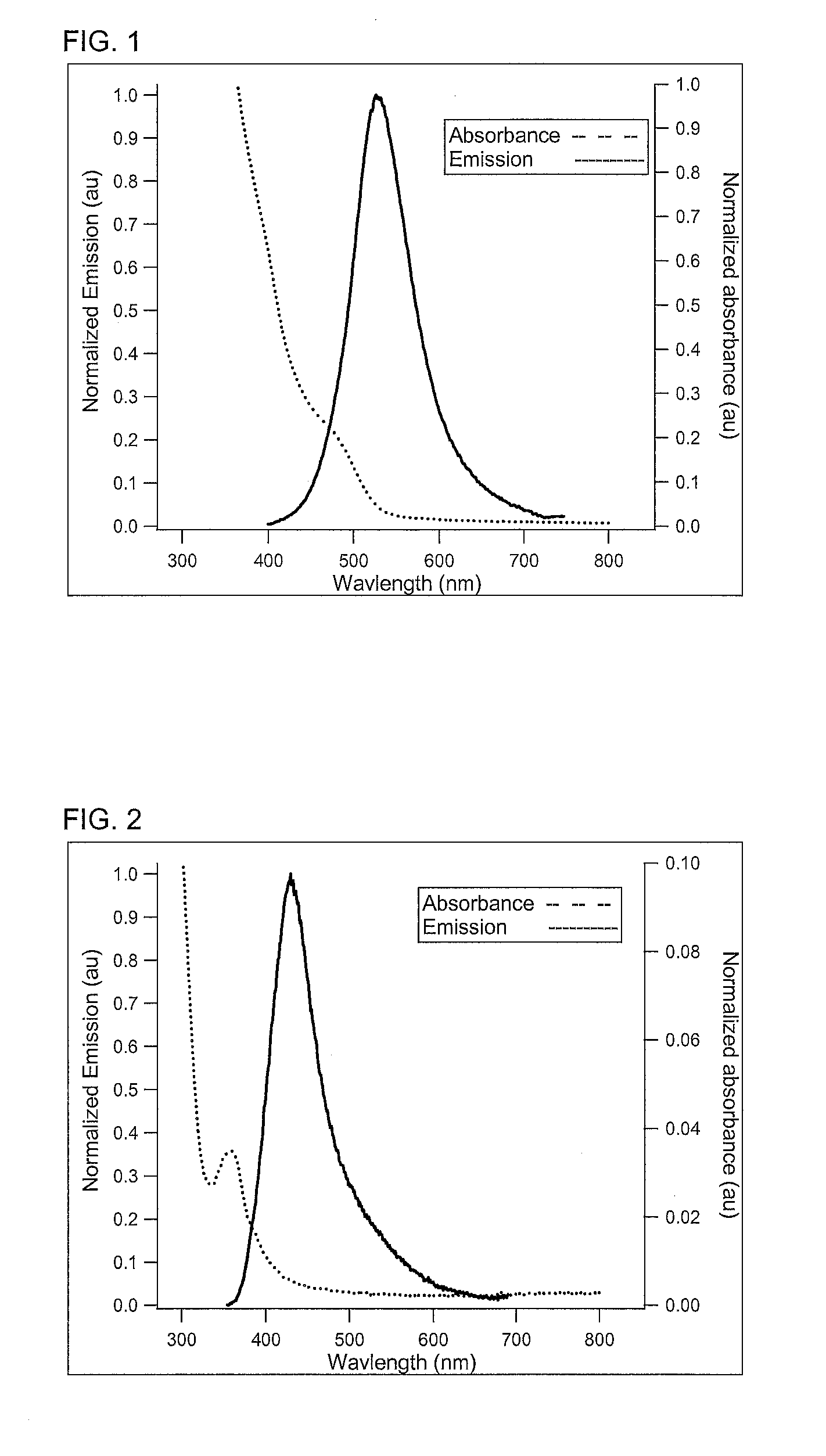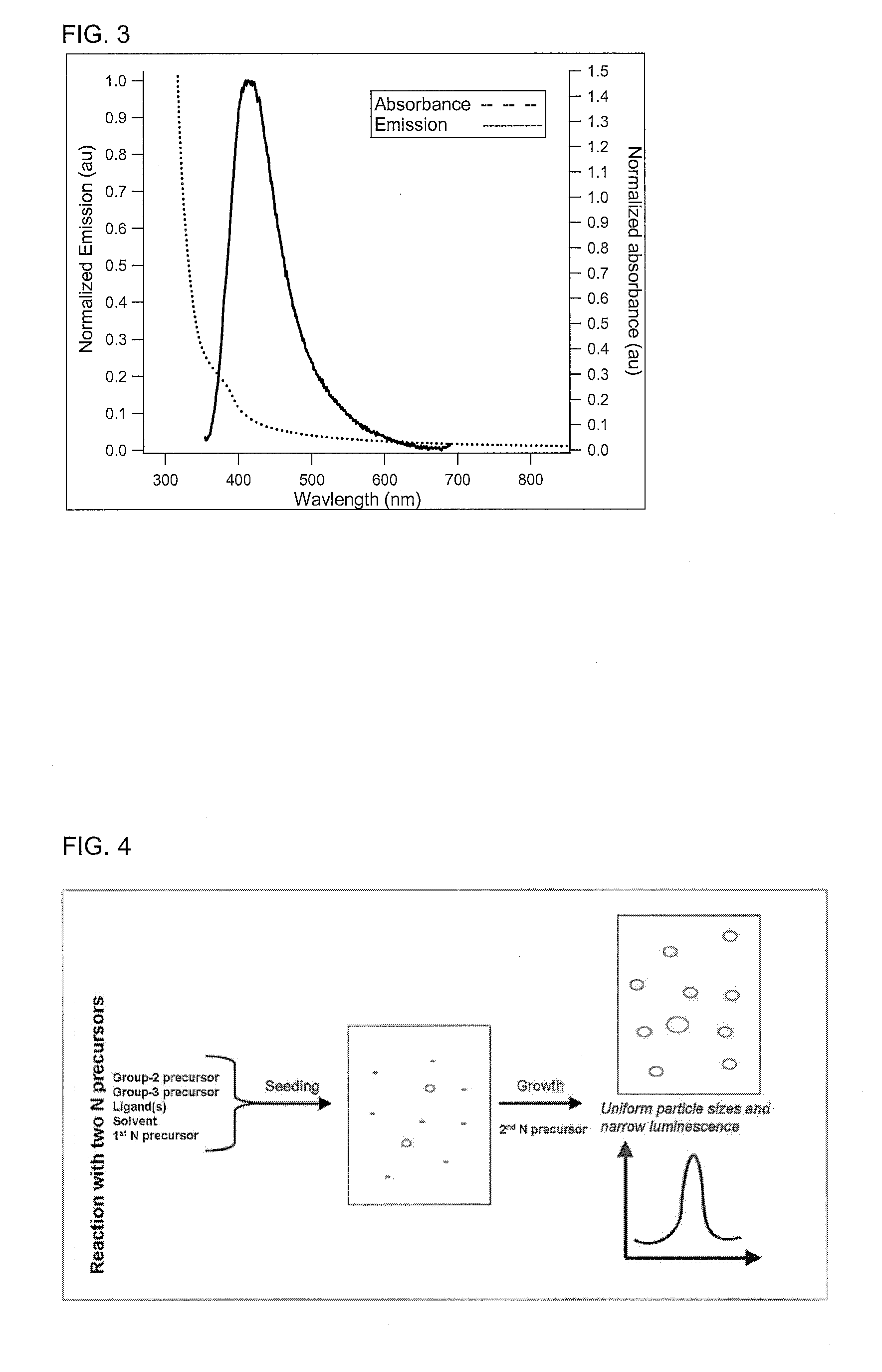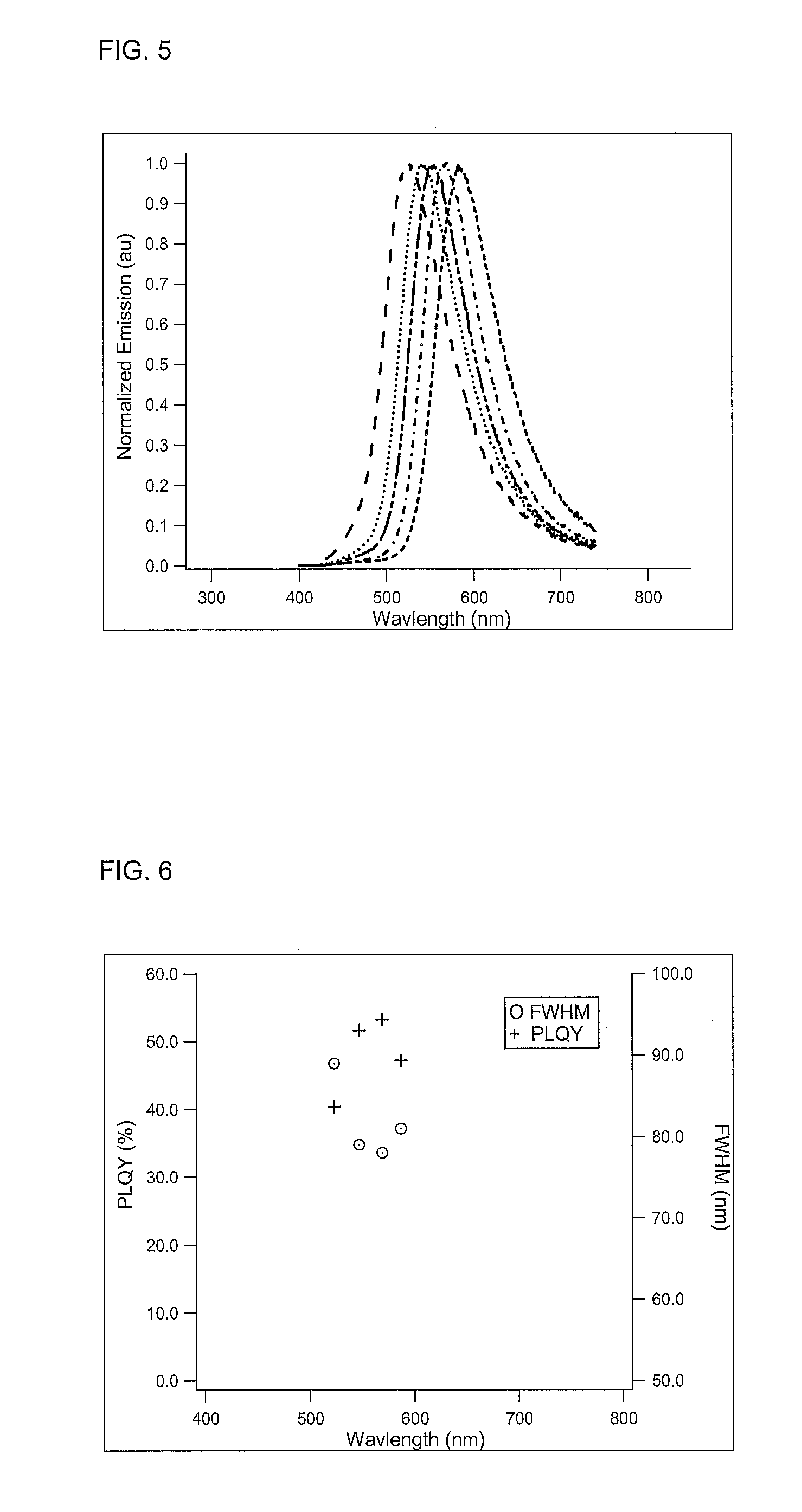Preparation of nanoparticles with narrow luminescence
a technology of nanoparticles and luminescence, which is applied in the field of emissive semiconductor nanoparticles and their synthesis, can solve the problems of poor crystallinity and size quality of the nanoparticle produced, and achieve the effects of simple procedures, low cost and pronounced quantum size effects
- Summary
- Abstract
- Description
- Claims
- Application Information
AI Technical Summary
Benefits of technology
Problems solved by technology
Method used
Image
Examples
example 1
Colloidal Nitride Nanocrystal Synthesis (NaN[CN]2)
[0062]In a 50 mL flask, aluminium iodide (0.25 mmole), zinc-stearate (0.75 mmole), sodium dicyanamide (5.00 mmole), hexadecanethiol (2 mmole), and octadecene (25 mL) were stirred and heated at 255° C. for 1 hour and 15 min. At this time, sodium amide (10 mmole) was added quickly in powder form. The reaction was then allowed to proceed with small aliquots being taken at various times and diluted with toluene. The resulting solutions were analysed by a Flouromax-4 spectrofluorometer; these solutions showed a change in the peak emission over the course of the reaction. This is shown in FIG. 5, in which each of the emission spectrum was obtained after the emission spectrum to its left in the figure—as the reaction time increases the nanoparticle size increases, and the peak emission wavelength increases.
[0063]The resulting nanocrystals could then be purified by a multi-step centrifugation process of the reaction mixture. Initially, the n...
example 2
Colloidal Nitride Nanocrystal Synthesis (LiN[CH2CH3]2)
[0065]In a 50 mL flask, aluminium iodide (0.25 mmole), zinc-stearate (0.75 mmole), lithium diethylamide (5.00 mmole), hexadecanethiol (2 mmole), and octadecene (25 mL) were stirred and heated at 255° C. for 1 hour and 15 min. At this time, sodium amide (10 mmole) was added quickly in powder form. The reaction was then allowed to proceed with small aliquots being taken at various times and diluted with toluene. The resulting solutions were analysed by a Flouromax-4 spectrofluorometer; these solutions showed a change in the peak emission over the course of the reaction.
example 3
Colloidal Nitride Nanocrystal Synthesis (LiN[CH3]2)
[0066]In a 50 mL flask, aluminium iodide (0.25 mmole), zinc-stearate (0.75 mmole), lithium dimethylamide (5.00 mmole), hexadecanethiol (2 mmole), and octadecene (25 mL) were stirred and heated at 255° C. for 1 hour and 15 min. At this time, sodium amide (10 mmole) was added quickly in powder form. The reaction was then allowed to proceed with small aliquots being taken at various times and diluted with toluene. The resulting solutions were analysed by a Flouromax-4 spectrofluorometer; these solutions showed a change in the peak emission over the course of the reaction.
[0067]Although the flask size, temperature, time of reaction, form of sodium amide, and solvent for pulls are described in the above examples specifically, they are meant as guides and the invention is not limited to these. For example, the reaction temperature of 255° C. used in the Examples is only one example of a suitable temperature and other temperatures could be...
PUM
| Property | Measurement | Unit |
|---|---|---|
| FWHM | aaaaa | aaaaa |
| photoluminescence quantum yield | aaaaa | aaaaa |
| FWHM | aaaaa | aaaaa |
Abstract
Description
Claims
Application Information
 Login to View More
Login to View More - R&D
- Intellectual Property
- Life Sciences
- Materials
- Tech Scout
- Unparalleled Data Quality
- Higher Quality Content
- 60% Fewer Hallucinations
Browse by: Latest US Patents, China's latest patents, Technical Efficacy Thesaurus, Application Domain, Technology Topic, Popular Technical Reports.
© 2025 PatSnap. All rights reserved.Legal|Privacy policy|Modern Slavery Act Transparency Statement|Sitemap|About US| Contact US: help@patsnap.com



